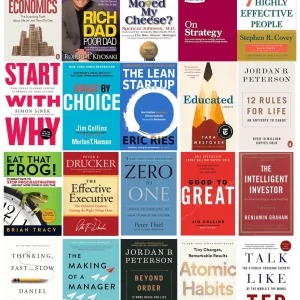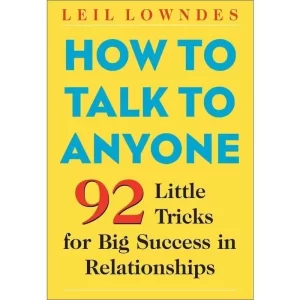NEW 100% Write-Offs Under the Big, Beautiful, Bill | Big Money Investing Review
Video Transcript
Welcome to Big Money Investing
Your Ultimate Destination for Learning From Big Money and How You Can Succeed Too!
Are you ready to take it to the next level?
Investing into sound investments like big money does. Subscribe to the Big Money Investing Channel
Hey guys, Toby Mathis here. And today we’re going to talk about how to use the new 100% write offs. And I do mean that with an S write offs under the one big beautiful bill, whether it’s equipment, vehicles, build outs and even a new building deduction, I’m going to go over them today. So if you own a business or real estate, the new law, the one big beautiful bill brought back this 100% bonus depreciation and even created a brand new 100% deduction for certain production buildings. Today, I’ll show you how to legally turn big purchases into immediate deductions with real examples that you can model. So stick around for timelines and traps so you don’t blow it. All right. My name is Toby Mathis. I’m with Anderson Business Advisors, and we help entrepreneurs and investors preserve, protect, and prosper. That’s our mission. This is educational. So you talk to your own pro before you act, or you can always reach out to us. All you have to do is go down. And those comments at any time you would want to say, hey, I want someone to talk to me, just write, consult and put it down in the comments. If you are planning to do equipment, vehicles, property improvements or a production facility, this could be worth 6 or 7 figures in tax savings under this brand new one. Big beautiful bill. So let’s go. All right. The big one. What you’re hearing everywhere everywhere is this 100% bonus depreciation is back. And it’s now permanent. Going forward. There’s no expiration like last time. And what this means in plain English for qualifying property, which is generally 20 year property or less, you can often deduct 100% in the year you place it into service. Even if you finance it, you put it on a credit card. You can write it off 100%. Even certain lease is still qualify. And let’s start with how this normally works. The IRS assigns lifetime to, you know, to assets. For example, if you buy a computer, the IRS says, hey, this is a five year asset and allows you to deduct it over five years. There are other laws most now, notably section 179 and 168 K bonus depreciation, which is the biggest change. The one big beautiful bill. But it’s important that you understand how the IRS looks at these things. Before we get too far ahead. So the IRS says you start with what’s your basis. What did you pay for it. Then you classify the asset. Is this five year, seven year, 15 year. What kind of property is it? Then you pick your depreciation method and then you choose what it is. And service. Then after all of that, you get to calculate the annual deduction by choosing whether to apply section 179 or 168. Okay. Right. Makes sense. Clear as mud. Right. This is why you have accountants. But let me give you an example. So let’s say you buy $100,000 of whatever equipment. Think of like a pizza oven in a pizzeria. This includes, by the way, that the the delivery, the sales tax, the installation, it all costs you $100,000 to get in that shop up and running and working. That is its basis, 100 grand. Now, what you paid for it. But everything the sales, tax, delivery, everything. You add all that into the basis. Now let’s assume you did this in June. You place the ovens into service at that time. So they actually have to go in and start being used. Right. You get to choose the half year convention. Right. The IRS has this things called MCAs modified accounting cost recovery accounting, cost recovery system table. That tells you how much you can deduct each year for those five years. It’s like a big mind bender. But under MCAs using the half year convention, you would get like I’ll go through the actual numbers on $100,000. It’s about $20,000 in year one, $32,000 in year two, 19,200 in year three. You noticing it starting to tailor down right? In year four, you would get $11,520 in year five. And remember, this is like you did a half year. So this is only partial $11,520. And then in year six, because remember we put it in service half years. So we’re going to be going over two years. You get another 5760. But wait a second. You paid for the oven in year one. So is your mind hurting yet. Right. I’m paying for it, but I’m spreading out the deduction over many years. Okay, but this will make it simpler before you get to MCAs. That whole cost recovery system. You get to choose the deduction. And what do I mean by that? Well there are two sections that allow you to accelerate that deduction. Number one is IAC 179. A lot of times you hear people say section 179. And this says you can deduct up to $2.5 million in equipment purchased in 2025. In year one, no matter when you place it into service during the year. But this, this, this is a big but. You cannot create a loss with section 179. Your deduction cannot create a loss. But section 179 has some hidden talent. You can choose what amount you want to apply to. Section 179 was you don’t have to use the whole thing. For example, you could use $30,000 of the $100,000 oven that you purchased in year one and depreciate the rest. And you’re saying, Toby, why the heck would I do that? Because we want the deduction to get into the highest tax brackets, right? We want that deduction to offset those, not the lower tax brackets. You don’t need to get greedy and get down to zero. You want to be in the lower tax brackets. That’s okay. But let’s take the 100% boom. We just want to take it. Now here’s the rub. Let’s say we want to do 100% in the first year. You have to use those ovens at least 50% for business, or you get recapture at your ordinary rate. Now what is what does that mean? So let’s just put it this way. If you quit using the ovens for business or the usage drops below 50%, the entire section 179 deduction comes back and they would have to recognize it as a tax amount. The amount of tax would be the difference between what you took under section 179, and what you would have been able to take under Max, the five year property. But it will hurt. This point often comes up not about pizza ovens, but it’s when people write off their trucks 100% under section 179. You’ve heard them that the TikTok influencers saying to buy a g-wagon at the end of the year and write it off. They don’t like it when they get nailed because in year two, they were driving that g-wagon around primarily personal, and they get nailed with an unexpected tax bill. But let’s go on. The next deduction you could use is under the one big beautiful bills 100% bonus depreciation. This is the golden ticket. You see. You get the 100%. Plus it can create a loss. Plus there’s no recapture if usage drops below 50% unless it is something called listed property. And that’s things like items for entertainment. There’s passenger cars and trucks. Airplanes think property use for entertainment or recreation. Otherwise you don’t have to worry about it. So for our pizza ovens, this is a sledgehammer, right? It gives us 100%. We can create a loss and we can quit worrying about it so long as we use it 50% in that first year. So what else can you use? Section 168 K bonus depreciation for? Well, it includes most business acute equipment, things like machinery, furniture, off the shelf software and 15 year land improvement. This is a big one for you real estate investor. And this is like paving fencing site lighting and qualified improvement property. Nonstructural interior improvements to commercial buildings after they’re placed in service. That’s huge. It does not include land or the building structure itself. Right. It also does not include inventory or intangibles. So sorry to those TikTok tax influencers who say really stupid things like, you don’t write off a Rolex. No, you can’t. It’s personal use or it’s inventory and neither one’s going to work for you. It’s not going to get you a deduction under bonus depreciation. But what about caveats using bonus right. Well here’s some important things. Bonus depreciation is class wide. If you bonus one asset say five year property you’ve you have to choose bonus depreciation for all five year property that you have. And it’s automatic. You either get 100% bonus depreciation or you elect out. So all five year property, seven year property, 15 year property is going to be bonus unless you elect not to use bonus. And what does that mean? It means you take 100% of the expense as a deduction in the year it is placed into service, unless you elect out of it. Number two, not all states allow bonus depreciation for state tax purposes. And there are states like California, New York, new Jersey, Illinois, Massachusetts, Pennsylvania is in there, North Carolina, South Carolina, Indiana, Arizona, Georgia, Connecticut, Michigan. They don’t follow the federal law. So you might be better off using section 179, depending on your circumstances. And that is why you want a good accountant who understands these things. But let’s get back to the 100% bonus depreciation. Real estate investors have lost their minds, right? This is why real estate investors are celebrating this. You see section 168 okay. Bonus depreciation allows you to deduct all sort of things that would normally be depreciated under, you know, your normal depreciation schedules for real estate, which is 27 and half years or 39 years, for example, land improvement. Right. Most people think you need a cost segregation to take them. By the way, that’s not always the case. So I’m going to give you a few quick rules. Right. This is write these down if you’re a real estate investor because this is going to come back to you at some point. If you spend new money for site work like paving, fencing, pole mounted lighting, curbs, sidewalks, irrigation, drainage, retaining walls. Right. You know, you already know the costs from the invoices. So you would just classify that as 15 year land improvements and take 100% bonus, bonus depreciation when you place that property into service. No cost segregation study is needed for that new spend. And I did not misstate that you don’t have to do a cost seg study if you’re spending new money, but if you’re buying an entire property and we’re going to carve out the five, seven and 15 year property and you want to put that into faster buckets, that’s when you need to use a cost segregation study. So let me give you guys some real life examples or good, good stories. Right. But let’s call it Maria’s Landscaping Company. Right. So Maria Lund runs a landscaping company in March this year she buys $350,000 of equipment, think mowers, loaders, compactor trailers, yada, yada, yada. And in addition, she spends $40,000 in software and office gear. Right? She’s making her business home. But she’s also got a site, a business site, and she improves her business site. You know what we call a yard or whatever you call it, by paving the lot, installing some security. maybe she put a fence around it. Maybe she put a security gate and some lighting in there, all of that. And because all of that, that I just mentioned is 20 year or less property and, and it it’s a big chunk. It’s 15 year land improvements. She can bonus get this 100% in the year she placed it into service. So if that’s 2025 that is. So we’re saying March of 2025. She’s going to get that entire deduction boom this year. That’s a potential $450,000 deduction in year one. And she doesn’t need to do a cost seg for the lard and the yard improvements. Right. Because those are direct. She can she track those project costs is let’s say she also bought a heavy duty truck that’s over the 6,000 pound gross vehicle weight. for business that’s typically bonus eligible. Two. Right. As a standard passenger car is subject to something called the passenger auto caps. But I’ll get to that in a second. But she buys that big old truck also can be deducted in year one. So here here’s a quick tip for you if you want to smooth out deductions in the future years. And I was I don’t want the 100% bonus right away. Right. If you want to use those deductions in future years because you already are at a loss, or just because you prefer your deductions in the highest tax brackets, maybe you’re up in the 30s and you want your deductions to be there, as opposed to in one year, offsetting some 12% tax rate. You you might be okay saying, hey, you know, if it’s under 20, if it’s under 22, I’m cool. If it’s in the 30s, I want to deduct it. Well, then you could elect added bonus depreciation for certain classes of property. So five year, seven year, 15 year you can choose and it can be an intentional choice on your return. You could say this class 100%. This class are using macros right. And let’s go back to section 179 for a minute. Two I want you to think of section 179 in section 168. Okay. Bonus depreciation as follows 168 K is your sledgehammer. It Bush smashes an entire category five year property splurge right seven year property 100% bonus depreciation for the year 179 is more like a regular hammer. Or better yet, let’s just call it a scalpel, because section 179 lets you elect to expense certain property asset by asset. Unlike bonus depreciation, which is a class wide rule, you could say, hey, pizza oven, I want to write off like I want a big deduction now. But something else I may let it be spread out over five years. The deduction amount is larger now that 2.5 million with phase outs at higher levels as well. Hey, it’s over 4 million. So why use section 179? One bonus is 100%. Well, because we can target items. Bonus can’t reach for example, there’s certain nonresidential roofs and Hvac systems that you can qualify for section 179, but are not eligible for bonus depreciation right now. Is your head really spinning? Yes. There are certain assets that you can write off under section 179 that you can’t write off under bonus depreciation. Plus section 179 gives you asset by asset control. So some expenses like some items are straight line and others you might say I want to more expense. Now let’s do another example for let’s let’s say that Carter is a doctor. Better yet, let’s say he’s a dentist and is renting out an office that he’s turning into his dental clinic because of what he’s doing. Maybe he needs a better Hvac, maybe he needs to some interior upgrades, and maybe needs to fix up the roof to make sure that those h facts can sit up there and assume that he finances everything. So let’s just say Carter leases out the medical suite and he spends $300,000 on interior improvements. Let’s say that he spends $180,000 to upgrade the Hvac and bolster the commercial roof. Right now, here’s the strategy. Maybe you’re using bonus for qualifying 20 year less items and ship qualified. improvements on nonstructural interior improvements. Use section 179 specifically for the roof and Hvac systems. So we’re targeting those items because section 179 lets us reach it where it’s 168 K doesn’t. But be mindful of the section 179 limits, the 2.5 and the the 4 million phaseout. And also whether or not you’re creating a loss because you could lose it under section 179, whereas you can use 168 K to create losses. Now what is the result of this targeted use or immediate deductions where bonus applies. And section 179 where bonus doesn’t without triggering class wide bonus that you may not want on some of those items. So here’s another new provision under the one big beautiful bill. And that is the brand new 100% deduction for certain production buildings. And this is for manufacturers or producers. And there’s a new temporary 100% write off. This is crazy right. For certain nonresident buildings used as an integral part of a qualified production activity. So think manufacturers, production facilities, refining that involves substantial transformation. It’s for owner users only so no leasing it to someone else to you know, produce a big deduction. And whether it’s offices, admin retailer showrooms, lodging or parking, those don’t qualify. There’s there’s also a ten year use requirement and we’re going to get more input under this type A building because you get to write the whole thing off. And then if you dispose of it too soon or change use too soon, there could be recapture. Right now we’re looking at a ten year period. So these are construction or acquisition windows and placed in service deadlines that you have to hit. So we’ll know more as we go forward because this is new. If this is on your roadmap though, start your design and documentation now and separate eligible production areas from ineligible office admin retail places because like you can actually carve it out. So let’s illustrate this via another story. Right. So let’s say that Ravi decides to revive a rest Belle plant. So Ravi acquires a long vacant food processing facility. Ravi modernizes it and begins production within the allowed window. He carves out some offices, some shift shipping areas, retail, maybe even parking lots, which is also not eligible for the deduction. But he keeps asking textual documentation to substantiate that production square footage because it’s the production area, the entire structure guys, not just the five, seven and 15, the entire building. And in that eligible production area, it can be 100% deducted in the year placed into service. So that’s going to dramatically reduce taxable income in the startup year and freeing up cash for maybe hiring expansion. That’s the intent. And it’s nice incentives for Ravi. But what about regular folks? You and me, right. We’re just regular real estate investors, like just regular old landlords. What about doing like that? Cost seg plus 100% bonus depreciation. Well, that will supercharge your first year deductions for sure. So let’s say you when you buy a commercial or residential rental, a cost segregation study can reclassifying a meaningful chunk of the property. Right? I buy a building. Let’s say I buy a, you know, let’s say a rental property. What portion of that is five year property, seven year property, 15 year property. When you’re if you’re spending new money, it’s easy. But if you buy a brand new building, you take the non the land value out. So this would just be for non land areas. It’s usually about 30% of that amount that can be reclassified into five year 15 year. You know 5 to 15 year property. So those would be eligible for bonus right now. Boom. So let’s use an example. Let’s say Ava buys a duplex, she buys a $1 million duplex. And let’s just assume the land value of that duplex. And there’s ways to do this just off the assessor’s page or you can get an appraisal, but let’s just say it’s 20%. That’s about right. So that means there’s $800,000. Is her depreciable cost basis. Whether she finances that or buys it on cash. Right. A cost SEG study, let’s just say identifies about 30% as five, 7 or 15 year components. With bonus. She may deduct that 30%, which is 30% of 800,000, is $240,000. Year one. She gets a big deduction that can help fund renovations. Maybe she gets some cash reserves, some debt coverage. Whatever the case, when you see influencers talking about cost savings and bonus depreciation, you almost always hear them bring in the short term rental loophole or real estate professional status. And that’s because they assume the deduction will be too big. Like these deductions are so big that they won’t be able to just be used against the rent of the property, and they want to offset other income. Like let’s say Ava’s just bought this duplex, right? But maybe she has a W-2 job, or she has a spouse that has a bunch of income. So let’s let’s just say Ava is netting $50,000 a year and positive cash flow from her $1 million duplex. It’s not out of the ordinary. With a $240,000 deduction, it will be close to five years before she has to pay any tax on that. That’s powerful stuff. But if you can be a short term rental loophole real estate professional, it would free it up. And that extra 190,000 after offsetting the the rents in year one could be used to offset W-2 income or other income that she has. So this is like powerful stuff, right now. Let’s shift gears to cars, right? Pun intended. Right. But we have to be careful of is business use and listed property. Right. You need to make sure that you have 50% business use for both bonus depreciation section 168 K for listed property and section 179 period. If you drop below that 50% or below, business use threshold, you’re looking at recapture, which means I’m recognizing the what I, what I took as a deduction as income to got to document your mileage. Please do it contemporaneously or you’re going to you’re going to lose an audit. Right. You got to track your mileage. Use an app. My like is a pretty good one. It just is all over the place. And you say, what? But if you’re trying to get that deduction it’s pretty powerful. Now for passenger auto automobiles, which is less than 6,000 pound gross vehicle weight. Right. And also subject to luxury auto caps that limit for sheer depreciation. And bonus, if you try to claim this bonus, the first year cap increases only by $8,000 is still pretty low. So, for example, if I buy a $100,000 car, you would be able to write off just over $20,000 in 2025. That’s with bonus if you simply reimburse mileage. For example, right now at $0.70 per mile, that you can reimburse and assume you drive 30,000 miles for business. If you really using that car a lot, right, you’re going to get back $21,000 anyway without having to worry about expensive commercial insurance. There’s no 50% test, there’s no recapture, there’s no added exposure to your business. So I always bring that up. I tend to use the mileage reimbursement method because with passenger cars, quite often they go from business to personal use, business to personal use, right. If that’s you don’t risk having that reclassification. Plus you’re not getting a huge deduction anyway. But what about the stuff we hear about all the time? Heavy vehicles greater than 6,000 pounds. Gross vehicle weight. Well there’s bonus depreciation. And it’s typically not subject to the luxury caps. So qualifying heavy vehicle that you use for more than 50% for business use can awesome often be 100% bonus in year one, up to the percentage that it is used for business. And this is a big point. Just because you use it for 60% for business does not mean that it’s 100% deductible, right? $100,000 heavy truck use 60% for business could give you a $60,000 deduction. Otherwise you’re going to be taxed on the personal use of that vehicle. And the IRS puts out a chart every year on the value of the vehicle and how much you have to recognize, as though the business paid you. So think of it like this. If I hired somebody and said, hey, I’m going to let you drive around in my Ferrari, right? I don’t actually have a Ferrari. Assume I had a Ferrari. Here’s a Ferrari. You get to drive it. I’m paying somebody. There’s that’s compensation. Right. And if you do it on your own business and you’re it’s hey, it’s 55% business, 45%, there’s going to be a tax. It just be aware. Right. For section 179 many SUVs are over that 6,000 pounds. And as long as they’re into that 14,000 pound cap and under section 179, they’re subject to a special cap for SUVs in 2025. This amount is 31,300. So every time I see again an influencer out there, I could section 179 my G-Wagon again, chances are you can. But there’s limits and there’s limits based on percentage of use and also a cap. Now here’s the thing. A lot of people, they’re using pickups and cargo vans, things like that. If if they have a I think it’s a greater than a six foot bed or it’s a cargo van, they’re not going to be treated as SUVs for that cap. And you can use the broader one sections, section 179. In fact, there’s a huge issue going on. Maybe I’ll do a video on on Tesla model X, right. And I actually drive one of those. But, people that are trying to write those off, the IRS has gotten its wires crossed, and they’re messing around with people that actually do get that deduction. Now, I’ll do that in a separate video. So always use the gross vehicle weight rating from the manufacturers, label. Don’t confuse it with the actual loaded weight. And I’m just going to say that because it matters under the tax law, what we are classifying and how we classify it. But bottom line, after everything, we just went over right. Bonus and 179 both apply to vehicles, but the caps and categories differ. Right. And keep business use greater than 50%. Know your gross vehicle weight and verify whether your vehicle is an SUV pickup or cargo van for section 179 purposes, if that’s what you’re using. All right. You have enough knowledge now to be dangerous. So what are your next steps? Well, you should start mapping out your purchases, especially as you get towards the end of the year. If it’s 20 year or less property, a 100% bonus is your default. Decide if you want to elect out for a class, like the 5 or 7 and 15 year properties so you can smooth out your deductions? Or do I just let it go and then you could use section 179 surgically for like roofs, Hvac or just specific items. And keep in mind, though that you have some income limits and there is recapture risk. So just know that if you’re using something personal and business, be aware of that recapture risk. I’ve seen it really hammer people for manufacturers. Start your design and permitting now separate eligible production areas and drawings. Plan for at least this ten year qualified use. Again, we’re going to get more, feedback from the Treasury at some point in the future. But as of right now, this looks like it’s very tasty. For those of you who are who are doing manufacturing and production for real estate, if you are buying properties, duplex, single family apartments, anything that’s just traditional real estate, consider doing a cost seg to unlock anything that’s below 20 year property the five, seven, 15 year components for bonus depreciation. And here’s easy rule of thumb if you’re spending new money, just remember you don’t need to do the cost seg because you had the receipt. You already know the cost. If it’s a property purchase, then consider doing a cost saving for vehicles. Verify your gross vehicle weight, document greater than 50% business use and apply the correct bonus or section 179 rules and caps. So you got to have these little checklist if you don’t have that checklist. That’s why people like Anderson exist, which you can always again go down in the comments and you put in there, hey, consult. All right. If this helped like and subscribe. And you know again reach out to Anderson if you need help. I’m Toby Mathis I’ll see you in the next video.Welcome to Big Money Investing – Your Ultimate Destination for In The Money Facts!
🌴 Discover the Big Money Investing Strategies on Metals and Real Estate Investing. 🌊
Experience the world of finance with Big Money Investing. We bring you the latest and greatest from Big Money Investors, showcasing the whys, how-to’s, and best practices. Whether you’re planning a short—or long-term investment, preparing is the first and most important step. The Big Money Investing channel is a great go-to investment advice source
🔥 What You Can Expect:
- Exclusive Financial and Big Money Investing How-To’s
- Big Money Financial Traits: Learn how to mix and match your perfect investment portfolio to match the planned-out time horizons.
- Financial Learning Is A Lifestyle Change: Stay financially fabulous with our expert investing tips, real estate practices, and healthy lifestyle advice.
- Behind-the-Scenes: Get a sneak peek into how the Big Money Investors spend some of that return, from photoshoots to interviews with the experts.
👙 Why Subscribe to Big Money Investing?
- Stay Updated: Be the first to know about new investment ideas and most importantly what not to be part of in today’s age.
- Inspired Goals Lend Motivation: Get inspired by our Big Money Investors’ vibrant and diverse lifestyles, a perfect view at times.
- Engaging Community: Join a community of financial enthusiasts and wealth producers who love to share their passion for life with others.
🔔 Subscribe Now: Hit the subscribe button and turn on notifications so you never miss an update from Big Money Investing. Join us on this fabulous journey and transform your financial situation with the latest trends and tips from Big Money Investing. Thank you for being a part of our amazing community.
#BigMoneyInvesting #big #money #investing #lifestyle #investors
Support Big Money Investing Sponsors
-
Book Sets, Books, How Big Money Investors Think About Money, How To Think Like A Big Money Millionaire
Big Money Financial Investment Management Book Set
$85.44 – $177.66Select options This product has multiple variants. The options may be chosen on the product pageQuick View -
Books, How To Think Like A Big Money Millionaire, Top Level Communication Skills
How to Talk to Anyone by Leil Lowndes 92 Little Tricks for Big Success in Relationships
Original price was: $18.24.$12.89Current price is: $12.89.Select options This product has multiple variants. The options may be chosen on the product pageQuick View -
Books, How To Think Like A Big Money Millionaire
Poor Economics By Abhijit V.Banerjee
Original price was: $18.09.$12.14Current price is: $12.14. -
Book Sets, Books, How Big Money Investors Think About Money, How To Think Like A Big Money Millionaire, Spiritual, Wealth Creation
7 Book Set – Master Your Time – Master Your Beliefs – Master Your Destiny – Master Your Thinking – Master Your Emotions – Master Your Motivation – Master Your Focus By Thibaut Meurisse
Original price was: $93.43.$67.33Current price is: $67.33.









